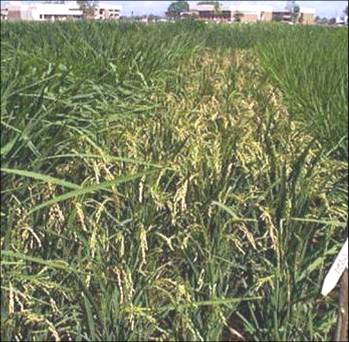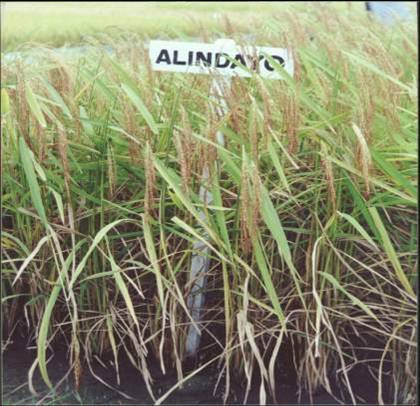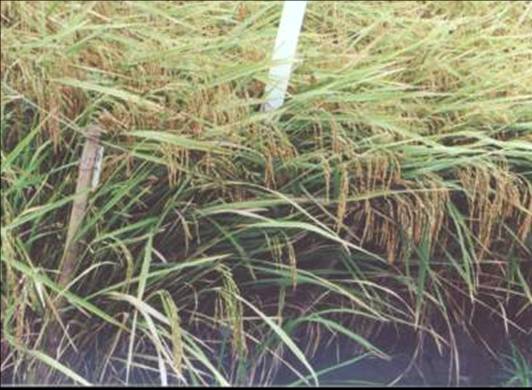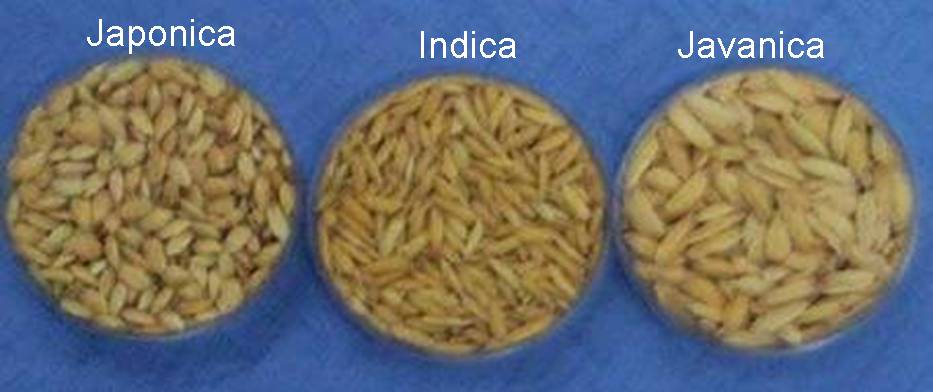|
|
|
|
|
|
|
|
|
|
|
|
|
Rice Races |
|
|
|
|
|
|
|
|
|
Distinguish Japonica, Javanica and Indica |
|
|
|
|
What is a "race"?
A race (in this context) is a genetically and often geographically distinct mating group within a species.
Below we describe Japonica, Javanica (belongs to Japonica but separately described because of its importance) and Indica.
|
|
|
|
|
1. Japonica Rice Japonica is one of the two major eco-geographical races of O. sativa (O. sativa japonica), the other is Indica.
It is a group of rice varieties from northern and eastern China grown extensively in some areas of the world. It is found in the cooler zones of the subtropics and in the temperate zones.
Japonica
It has narrow, dark green leaves, medium-height tillers and short to intermediate plant stature.
|
|
|
|
|
2.Javanica Designation for the bulu and gundil varieties of Indonesia and many upland rices. They belong to the Japonica race of O. sativa.
Javanica
Javanica are rice varieties with broad, stiff, light green leaves. It is low-tillering and has a tall plant stature.
|
|
|
|
|
3. Indica Indica rice is the other of the two major eco-geographical races of Oryza sativa (O. sativa indica).
It is the major type of rice grown in the tropics and subtropics. They grow mostly in the Philippines, India, Pakistan, Java, Sri Lanka, Indonesia, central and southern China, and African countries.
Indica
Indica has broad to narrow, light green leaves and tall to intermediate plant stature (except for the semi-dwarf). Indica plants tiller profusely.
|
|
|
|
|
What is the difference in grains?
Japonica grains are short, roundish, spikelets are awnless to long-awned, grains do not shatter easily, and have 0-20% amylose content.
Javanica grains are long, broad, and thick, spikelets are awned or awnless. The grains do not shatter easily, and have 0-25% amylose content.
Indica grains are long to short, slender, somewhat flat, and the spikelets are awnless. Indica grains shatter more easily and have 23-31% amylose content.
The different grains
The different panicles
|
|
Next lesson |
|
What is meant with inbreds, hybrids and transgenic rice? |
|


![obj[1]](obj_1_.gif)




